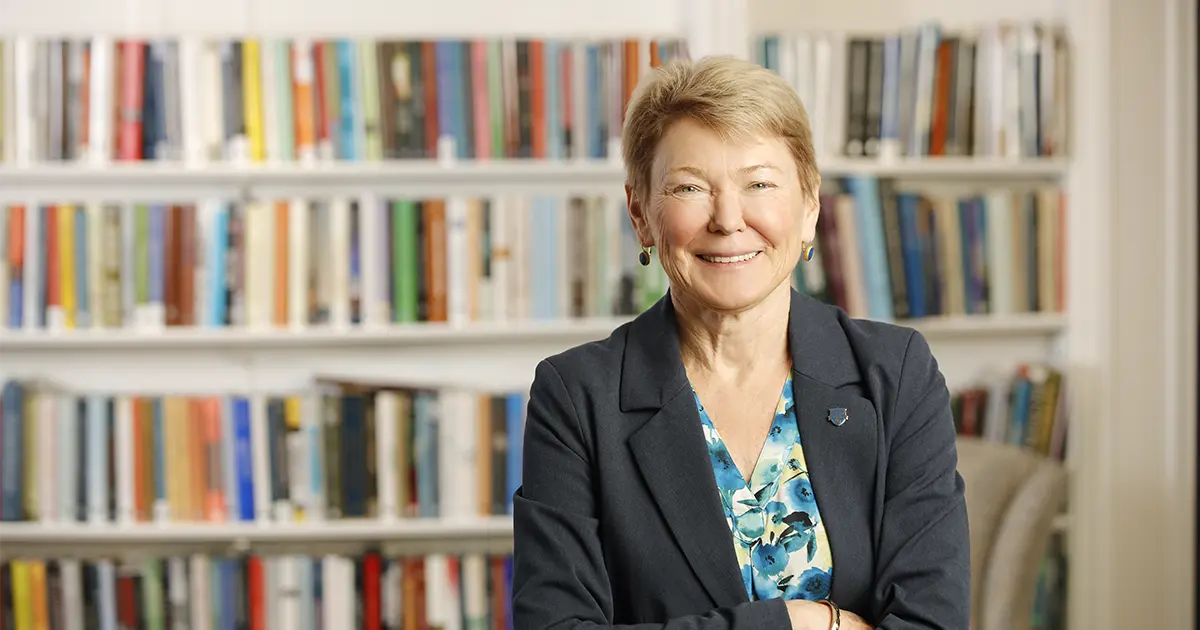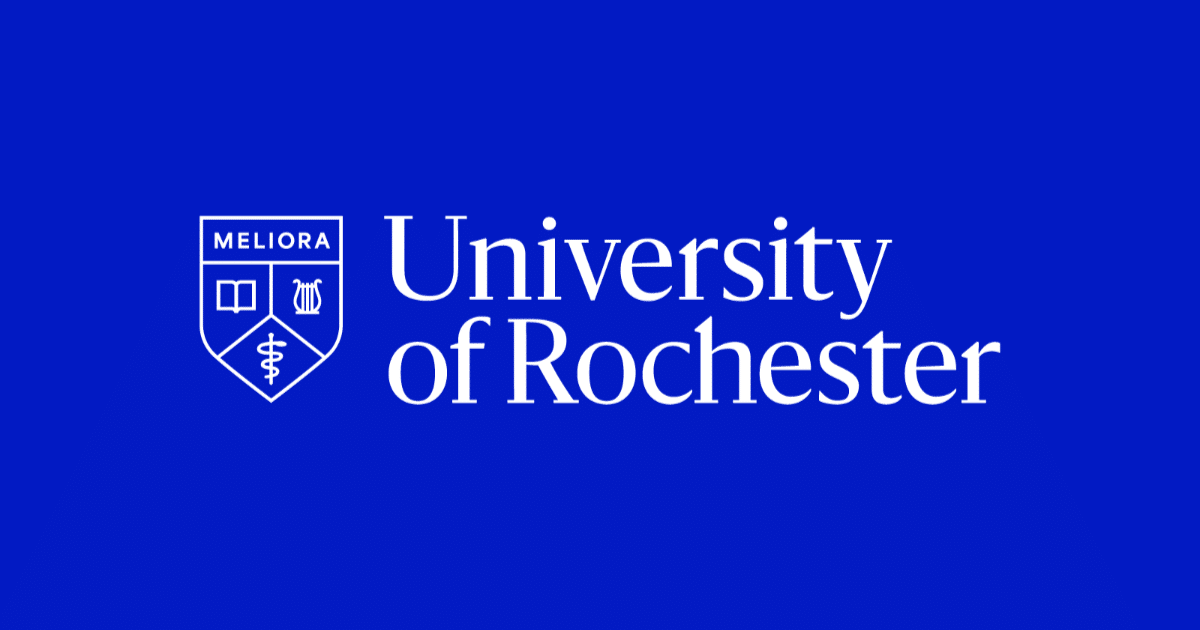Transdisciplinary RFP: University of Rochester Resilience Research Center
Why can some people shake stress, trauma, adversity, and illness, but not others—and what can we do about it?
TL;DR
Why don’t stress, trauma, and adversity affect everyone the same? Why are some people able to bounce back faster or better than others? We’re talking about “resilience.” The faculty members behind this center aim to identify the sociocultural factors and other mechanisms that perpetuate stress-related health issues, enabling the development of novel interventions that prevent or reverse those conditions. Jump to: their big idea; the why and why us; implications for Rochester’s reputation; the last word.
When perusing early-life stress research—much of which has been authored by Rochester researchers—it becomes clear that being exposed to early-life adversity and trauma (e.g., child abuse and neglect, family conflict, community violence, etc.) can set the stage for a lifespan fraught with mental and physical health problems, chronic disease, and early death.
Yet, various sources estimate that anywhere from 20 to 40 percent of people with adverse childhood experiences lead healthy lives.
A smaller but growing amount of research on aging points to the pernicious impact that adverse childhood experiences and early-life stress can have on health and longevity in older adulthood. To what extent remains a driving question across the basic and clinical sciences at Rochester, and we know even less about how health-protective factors that strengthen with age—such as emotion regulation and wisdom—can be leveraged to overcome the effect of early-life stressors later in life.
So, why is it that many individuals who experience significant life stress, trauma, or adversity fare pretty well emotionally, mentally, and physically? In other words, what makes people “resilient”?
That question, and the desire to leverage its answers so that we can prevent health risks and nurture a person’s ability to adjust to or quickly recover from adversity and illness, is the foundation of the University of Rochester Resilience Research Center (UR³C).
The team*
Co-leads
- Kathi Heffner
Professor, School of Nursing
Professor, Department of Medicine, Geriatrics/Aging
Professor, Department of Psychiatry, Behavioral/Psychosocial Medicine
Director, Hubbard Center for Nursing Research on Aging at School of Nursing
Executive Committee Member, UR Aging Institute
-
Jennie Noll
Professor, psychology at School of Arts & Sciences
Executive director, Mt. Hope Family Center
*The work of this proposed center is supported and supplemented by 19 other faculty members from across the University, including those from biomedical genetics, counseling and human development, medicine, nursing, psychology, and public health sciences.
Okay—Picture this…
What’s the main idea behind the institute?
Building on Rochester’s extraordinary background in biopsychosocial research, UR³C aims to bring together investigators with perspectives from all phases of life—from infancy through advanced age—to study the mechanisms underpinning resilience. With a greater understanding of those contributing factors, the center could facilitate means of preventing and reversing the associated health risks.
To advance the science of resilience, UR³C has established three objectives.
Develop a transdisciplinary approach to the study of resilience
The team is developing the center around the central idea that “resilience” is a concept that may vary across disciplines but is a characteristic capable of resisting, adapting to, and recovering or growing from threats, challenges, or harmful stimuli.
In other words, whatever your discipline is, it can generally be agreed that resilience is characterized by a person’s ability to experience disturbance or shock and return to their functional equilibrium in better-than-expected ways. If you agree with this definition, you can see why this is an inherently transdisciplinary pursuit, as it integrates principles from all levels of the human experience.
By fostering collaborations among the University’s basic, social, and clinical science experts in stress and biopsychosocial research, UR³C intends to serve as an incubator for solutions that confront the gaps in how we think about resilience that have inhibited discovery. The team has used their planning grant period to collect key faculty shaping the center’s development and engaging in critical discussions of resilience.
Significantly advance the understanding of how and why some people harbor stress to the detriment of their long-term health
Research shows that early-life adversity can alter key biological processes, becoming the foundation of serious later-life health issues, including inadequate immune function, cognitive decline, and accelerated biological aging. Why early-life stress “gets under the skin” for some more than others remains elusive. However, more and more research points to stress being biologically embedded, which involves the complex interplay of stress-regulating processes that include brain plasticity, hormones, the heart, the immune system, gene expression, and even cellular aging.
To develop groundbreaking drug treatments and behavioral interventions that promote resilience, researchers must make sense of that tangle of processes, why people respond to early-life stress differently, and how resilience is developed.
The UR³C hopes to facilitate that untangling by leveraging existing resources and technology to scrutinize the mechanisms underlying stress and stress resilience through novel multidisciplinary collaborations and multi-level data integration.
Accelerate the translation of research
Most scientists doing medical research bemoan the bottleneck that keeps discoveries from becoming the policies and practices that improve public health. Closing that gap requires researchers to engage in the policymaking process.
UR³C is committed to alleviating that congestion in resilience science. The center will promote evidence-informed models of translation that facilitate dissemination to spur advancements in practice and public health policies that cultivate resilience for all. Most importantly, they will engage researchers with the know-how, expert support, and resources to move their research from ideas to real-world applications.
Success is in the air
Why and how is Rochester poised to take this on, and what strengths is this institute bringing to the table?
Solving public health problems related to stress and adversity requires a transdisciplinary approach to the definition and study of resilience. UR³C believes Rochester is the perfect place for this to happen for the following reasons:
Outstanding multidisciplinary expertise
The UR³C will bring together a highly experienced, multidisciplinary leadership team and 18 faculty experts from across the University, representing psychology, human development, anthropology, gerontology, economics, neuroscience, genetics, immunology, psychophysiology, psychoneuroimmunology, nursing, geriatrics, pediatrics, psychiatry, public health, health services, and data science.
Members of this collective have begun to develop a shared understanding of how they see and study stress and resilience through their respective disciplinary lenses and scientific methods. They’re also working to expand upon existing stress and resilience research at various life stages, particularly in the following areas of exceptional research strength:
- The epigenetic consequences of childhood abuse. This refers to changes in gene expression, which can affect how genes are turned on or off. DNA methylation is one example in which stress from abuse can add chemical markers (methyl groups) to DNA, silencing or activating specific genes, such as those involved in brain function or immune system regulation. How can such changes be prevented or reversed?
- The use of behavioral interventions to help older adults strengthen their immune systems and adapt to stress. Research might examine how stress hormone (e.g., cortisol) levels, inflammation, and immune responses react to cognitive training, Mindfulness-Based Stress Reduction or regular physical activity.
- Neurobiological underpinnings of adolescent stress and anxiety. Research might explore how adolescents are hardwired to experience stress and anxiety. Teens are carrying around a still-developing prefrontal cortex (decision and emotion regulation center) and a hyperactive amygdala (fear and threat center), creating an imbalance that could make them stress- or anxiety-prone. Can we target this circuitry for resilience?
To this point, the impact early-life adversity, life-course stress, and lifespan resilience have on health and well-being has been slowed (at best) by siloed attention to mechanisms and outcomes within specific stages of human development. UR³C aims to make the University a leader in resilience science through unique and innovative transdisciplinary collaborations. The center will facilitate—and hopefully hasten—discovery by focusing its collective expertise on distinct developmental stages, including childhood, adolescence, young adult, midlife adult, and older adult.
Leaders in childhood development and aging research
The proposed center will capitalize on Rochester’s strengths through its collaborative, highly experienced leadership at the forefront of stress and resilience science. They also bring extensive experience leading University-funded and federally funded research centers.
Research-to-policy expertise
UR³C also plans to commit to a leadership structure that includes expertise and “on the hill” experience in data-driven, non-partisan connection between research and policy communities to ensure its ability to have an impact on health and well-being across the lifespan.
Reputation. Reputation. Reputation.
How will the success of the center enhance Rochester’s prominence and prestige?
Answer: Making the University of Rochester the world leader in resilience science and its translation to high-impact policies and services. That’s the lofty goal UR³C has set for itself. And through its work, also aims to bolster the University’s reputation as an academic leader in translating research.
Advancing the understanding of stress resilience in human health and well-being is highly innovative. At the national level, the National Institutes of Health (NIH) has undertaken efforts to advance the science of resilience, recognizing resilience as a transdisciplinary, cross-cutting mechanism relevant to multiple systems and implicated in responses that drive human health. The NIH’s interest in this area underscores the impact Rochester can have on a fast-developing field that has, thus far, lived within disciplinary silos.
The final word
UR³C is being driven by two scholars looking at opposite sides of the life course—Jennie, studying how children are affected by trauma and adversity and how they recover; Kathi, investigating our older population and what they’ve gone through and how that has contributed to their quality of life and longevity. Both think about these things at the cellular level, asking questions like, “How can we reverse these effects?”
All of that leads to resilience as an umbrella concept and, more importantly to their cause, the mechanisms of resilience. Jennie underscores the importance of this focus, saying that “understanding the mechanisms involved with early-life adversity and stress and how they operate over the course of our lives provide clues for micro models.”
Developing “micro models” is why having a center is critical—because it requires that really rigorous basic research be done through multiple lenses. From a healthcare perspective, it will help us think about care delivery systems and how they contribute to resilience. But we also have historians who are looking at intergenerational traumas to understand how cultures recover. The economy and our political system also deliver shocks to our psyches and affect us in different ways. UR³C intends to examine resilience from all these angles. “It’s understanding stress and resilience at multiple levels, cellular, individual, up to systems and culture,” Kathi says. “These models being developed across disciplines reflect how systems, communities, policies—how these interconnected levels can help ease stress in ways that allow people to maintain their function and thrive.”
Resilience, as a field of study, is still in its infancy. Still, there’s proof that behavioral interventions can affect biology. And even though the NIH has demonstrated an interest in reversing the negative impact stress can have on health, it hasn’t made much progress. So, what does UR³C expect to bring to the table?
“This is hope in a bottle,” Jennie says. “We’d like to build on existing research to provide optimism and sustainability that hasn’t previously been available to communities facing dire circumstances or families with generations of adversity or trauma. For patients who are told they have to cope with a constant stress on their system or that they have a genetic predisposition to post-traumatic stress disorder—we’re injecting hope.”
Related updates
President Sarah Mangelsdorf reflects on the University of Rochester’s strong progress, campus growth, and resilience heading into 2025–26.
The refreshed brand builds on the University’s 175-year legacy while spotlighting its vision and values.
The comprehensive campaign seeks to raise $1.75 billion for Rochester’s future while expanding alumni and community engagement.








